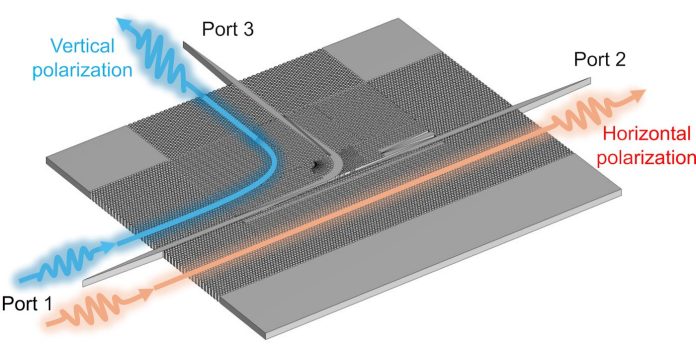
A team of scientists has made a significant breakthrough in 6G wireless communication technology by developing a new device called a polarization multiplexer.
This innovation could drastically increase data transmission speeds, pushing wireless technology into the future.
As we look towards the next generation of wireless communication—6G—terahertz frequencies hold the key.
These frequencies, which are much higher than those used in current systems, promise to deliver incredibly fast data transfer rates.
However, a major challenge in using terahertz frequencies is managing the available spectrum efficiently.
The research team, led by Professor Withawat Withayachumnankul from the University of Adelaide, has tackled this challenge by creating the first ultra-wideband integrated terahertz polarization multiplexer.
This device is built on a substrateless silicon base and has been successfully tested in the sub-terahertz J-band (220–330 GHz), making it a critical component for future 6G communication systems.
“Our new polarization multiplexer allows multiple data streams to be sent simultaneously over the same frequency band, essentially doubling the data capacity,” explained Professor Withayachumnankul.
“This is a record achievement for any integrated multiplexer across any frequency range. If we could scale this technology to the optical communication bands, it would cover all the optical bands used today.”
A multiplexer is a device that enables several input signals to share the same resource, such as multiple phone calls being transmitted over a single wire. The team’s new device doubles the communication capacity within the same bandwidth while reducing data loss compared to existing devices.
The best part is that it can be manufactured using standard processes, making large-scale production both feasible and cost-effective.
“This innovation not only boosts the efficiency of terahertz communication systems but also lays the groundwork for more reliable and faster wireless networks,” said Dr. Weijie Gao, a former Ph.D. student at the University of Adelaide and now a postdoctoral researcher at Osaka University.
“The polarization multiplexer is essential for realizing the full potential of terahertz communications, which could drive advances in areas like high-definition video streaming, augmented reality, and next-generation mobile networks like 6G.”
The work has been published in the journal Laser & Photonics Reviews and marks a significant step forward in making photonics-enabled terahertz technologies more practical.
Professor Masayuki Fujita of Osaka University, a co-author of the study, highlighted the broader impact of this innovation.
“By overcoming key technical challenges, this breakthrough is likely to spark a wave of interest and further research in the field,” he said. “We expect that in the next one to two years, researchers will explore new applications and refine the technology even further.”
Over the next three to five years, the team anticipates major advancements in high-speed communications, leading to the development of commercial prototypes and early-stage products.
“Within a decade, we expect these terahertz technologies to be widely adopted across various industries, revolutionizing fields like telecommunications, imaging, radar, and the Internet of Things,” added Professor Withayachumnankul.
This new polarization multiplexer can also be integrated with the team’s earlier beamforming devices on the same platform, enabling even more advanced communication functions. With this technology, the future of wireless communication looks faster, more efficient, and incredibly exciting.


